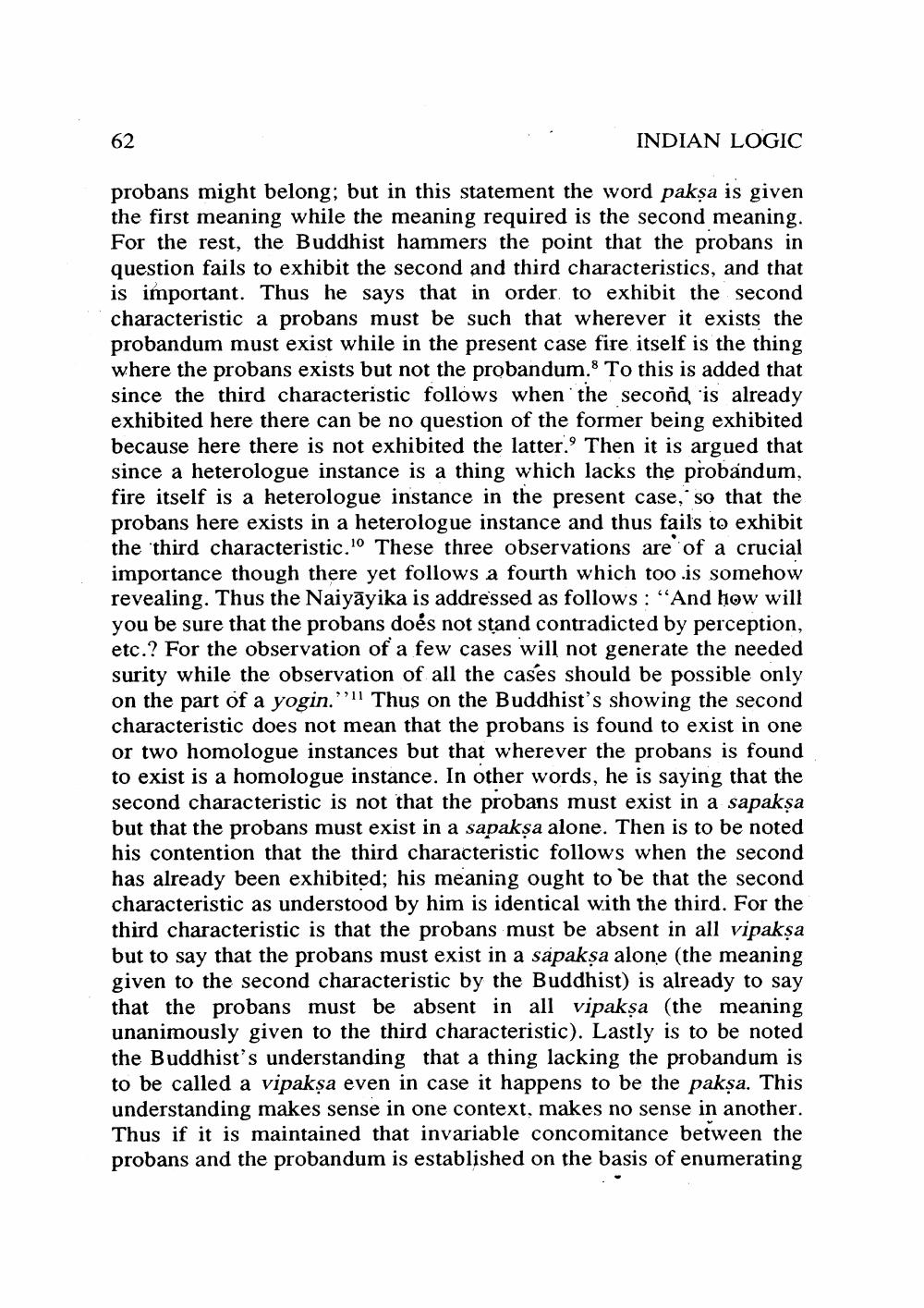________________
62
INDIAN LOGIC
probans might belong; but in this statement the word pakṣa is given the first meaning while the meaning required is the second meaning. For the rest, the Buddhist hammers the point that the probans in question fails to exhibit the second and third characteristics, and that is important. Thus he says that in order to exhibit the second characteristic a probans must be such that wherever it exists the probandum must exist while in the present case fire itself is the thing where the probans exists but not the probandum. To this is added that since the third characteristic follows when the second is already exhibited here there can be no question of the former being exhibited because here there is not exhibited the latter." Then it is argued that since a heterologue instance is a thing which lacks the probandum, fire itself is a heterologue instance in the present case, so that the probans here exists in a heterologue instance and thus fails to exhibit the third characteristic. These three observations are of a crucial importance though there yet follows a fourth which too is somehow revealing. Thus the Naiyayika is addressed as follows: "And how will you be sure that the probans does not stand contradicted by perception, etc.? For the observation of a few cases will not generate the needed surity while the observation of all the cases should be possible only on the part of a yogin." Thus on the Buddhist's showing the second characteristic does not mean that the probans is found to exist in one or two homologue instances but that wherever the probans is found to exist is a homologue instance. In other words, he is saying that the second characteristic is not that the probans must exist in a sapakṣa but that the probans must exist in a sapakṣa alone. Then is to be noted his contention that the third characteristic follows when the second has already been exhibited; his meaning ought to be that the second characteristic as understood by him is identical with the third. For the third characteristic is that the probans must be absent in all vipakṣa but to say that the probans must exist in a sapaksa alone (the meaning given to the second characteristic by the Buddhist) is already to say that the probans must be absent in all vipakṣa (the meaning unanimously given to the third characteristic). Lastly is to be noted. the Buddhist's understanding that a thing lacking the probandum is to be called a vipaksa even in case it happens to be the pakṣa. This understanding makes sense in one context, makes no sense in another. Thus if it is maintained that invariable concomitance between the probans and the probandum is established on the basis of enumerating




